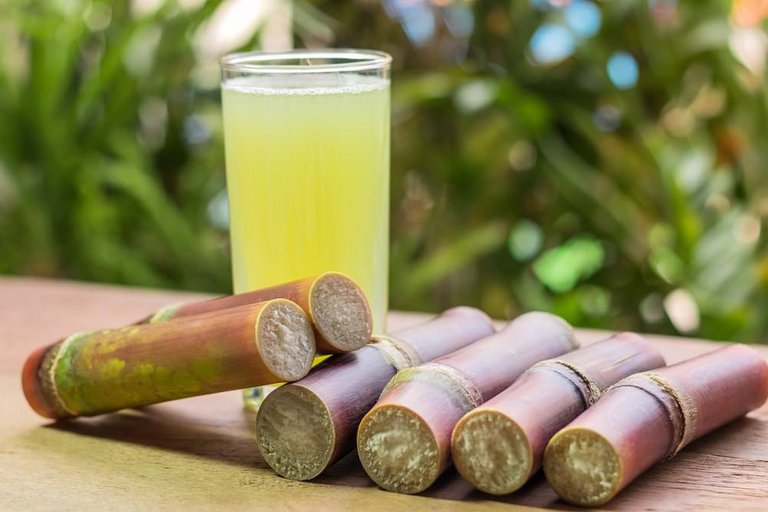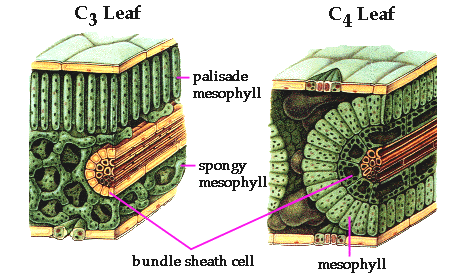Hey guys! Welcome back to Fun Facts #2! I have started this series of Fun Facts postings to share tiny bits of knowledge that I learnt recently or have already know with you. Who doesn't love to learn new things? So today's post will related to science and yes... plants again!
Yesterday I went to a roadside stall to have a quick lunch and OMG! I have drank the most refreshing and most quenching sugarcane juice. So what did I do? Search for some sugarcane facts of course!
SUGARCANE (As sweet as me? Haha just joking!)

Source
A close-up picture of sugarcane
Brief Introduction
Sugarcane is a native to the warm temperate to tropical regions of South Asia and Melanesia. It is widely used for sugar production around the globe due to its fibrous stalks that are rich in the sugar sucrose. Unlike trees, sugarcane is a C4 plant, which in shorts means that it undergo photosynthesis most efficiently in hotter and sunny climates. That's why we can see sugarcane everywhere in Malaysia.
(Most trees are C3 plants)
C4 plants
What makes C4 plants different and so special?
It is to avoid enzyme rubisco from catalysing the reaction of oxygen with RuBP (a five carbon compound) or we call this process as photorespiration, which is a BIG NO NO for a plant because less photosynthesis will take place. Photorespiration occurs most readily in places with high temperature and high light intensity. So plants growing in these areas, including sugarcane, have to adapt themselves to these conditions.
They have bundle sheath cells, arranged around the vascular bundle and it is surrounded by a ring of mesophyll cells. RuBP and rubisco can be found in the bundle sheath cells, so they have no direct contact with oxygen inside the leaves.

Source
Photosynthesis in C4 plants
The mechanism for photosynthesis in C4 plants are different from C3 plants. I am specifically going to talk about C4 plants in this post. So, the pathway for C3 plants is going to be a story for another time. First, a picture of a rough idea of how photosynthesis works in C4 plants:

Source
Photosynthesis is divided into two stages: Light Dependent Stage and Light Independent Stage
- Light Dependent Reaction uses light energy
- Light Independent Reaction / Calvin Cycle do not use light energy
Light dependent reaction for C4 plants is different from C3 plants:
- In the mesophyll cells, enzyme PEP carboxylase catalyse the combination of carbon dioxide from air with a three carbon compound called phosphoenolpyruvate, PEP in short.
- A four carbon compound, oxaloacetate is formed. (That's where the name C4 comes from)
- Oxaloacetate is converted to malate and this is passed on to the bundle sheath cells.
- Carbon dioxide is removed from malate and enters light independent reaction. The remaining compound, pyruvate is generated back into PEP and this process continues.
Light independent reaction for C4 plants is the same as C3 plants:
- Carbon dioxide combines with RuBP, catalysed by PEP carboxylase, to give two molecules of glycerate 3-phosphate.
- In the presence of ATP and reduced NADP (NADP is a hydrogen carrier), glycerate 3-phosphate is converted into triose phosphate.
- Five-sixth of these triose phosphate is regenerated back into RuBP. One-sixth of the remaining triose phosphate is used to make glucose, amino acids and lipids.
Top five benefits of sugarcane
- Gives an instant kick of energy and it really does quenches your thirst. (Yeap, that's what I feel after drinking sugarcane juice) The next time you feel tired or dehydrated, try some sugarcane juice instead of artificial energy drink!
- It is good for diabetic patients. (But i thought sugarcane juice is sweet, hmm...)
Even though cane juice tastes very sweet and has high sugar content, it is good for diabetic patients. It contains natural sugar which has low glycemic index that prevents steep rise in blood glucose levels in diabetics, so it can act as a substitute of aerated drinks for them. However people with Type-2 diabetes should consume it in moderation and after consultation with their doctors. - 'Healthy kidney, healthy life'. Taken in a diluted form, with lime juice and coconut water, sugar cane juice helps in reducing the burning sensation which is commonly related to urinary tract infections, sexually transmitted diseases, kidney stones and prostatitis.
- Antioxidants in sugarcane help to fight against infection and builds a stronger immune system of the body.

Source - Last but not least, sugarcane juice makes our skin go 'Blink Blink!' Sugarcane juice contains alpha hydroxy acids which are beneficial for our skin. They fight acne, reduce blemishes, prevent ageing and help in keeping the skin hydrated. You can try adding sugarcane juice to your facial masks and use it often to see the effects.
Source for the benefits

Source

Wooowww!! I that’s interesting to know about the mechanism of c4 plantssss! I belanja u minum sugar cane juice..
Yes yes please, I'm craving for some
I noticed @aisher understand very much about science, I like to you..
Haha thanks for the compliment😂😊i study science but I don't know a lot. Gotta do some research myself. Thanks for dropping by!
Very detail scientific explanation, welldone!!
Thank you so much🙏haha
You've been upvoted by TeamMalaysia community. Do checkout other posts made by other TeamMalaysia authors at http://steemit.com/created/teammalaysia
To support the growth of TeamMalaysia Follow our upvotes by using steemauto.com and follow trail of @myach
Vote TeamMalaysia witness bitrocker2020 using this link vote for witness
You have been upvoted by the @sndbox-alpha! Our curation team is currently formed by @jeffbernst, @bitrocker2020, @jrswab & @teachblogger . We are seeking posts of the highest quality and we deem your endeavour as one of them. If you want to get to know more, feel free to check our blog.
Congratulations @aisher! You have completed some achievement on Steemit and have been rewarded with new badge(s) :
Click on any badge to view your own Board of Honor on SteemitBoard.
To support your work, I also upvoted your post!
For more information about SteemitBoard, click here
If you no longer want to receive notifications, reply to this comment with the word
STOPOh, wow! That's a lot of researched you put into this post!! :O
I thought I was going to find a (ahem) sweet post! Never expected this to be soooo scientific!
I'm tired. And I was soooo not ready to read something like this! ":P
Sugar cane, huh? Never liked it. I * might * consider drinking some next time -- well, only if someone offered it to me! (lol)
I'm looking forward to your other fun facts, the next time I'm more awake, haha! :)